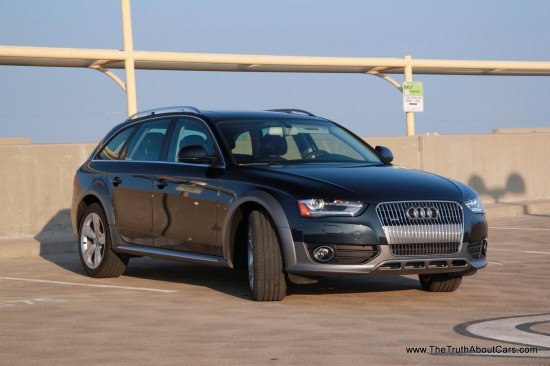#allroad
Audi A4 Allroad is Clearly All About the Cladding, Not the Height
Compared with Audi’s new, fifth-generation 2017 Audi A4 sedan, the 2017 Audi A4 Allroad is nine-tenths of an inch higher. Ground clearance grows from 5.2 inches to 6.5.
It’s not exactly Rubicon ready.
But wait. Audi added four inches of black cladding above the front wheel arches; four-and-a-half above the rear wheels. Jeep Jamboree, here we come.
NAIAS 2016: Audi A4 Allroad Quattro is a Model Built on Millimeters
Thirty-four millimeters of ground clearance. That’s what separates a standard A4 Avant wagon (which we can’t get here in the States) with the new Audi A4 Allroad quattro. That, and a bunch of plastic lower-body cladding.
Apparently, American consumers can’t handle the low step-in of the standard Avant.
Review: 2013 Audi Allroad
If you haven’t been paying attention to my life story (discretely woven into my reviews), I’ll spell it out clearly: I live in what is considered to be a temperate rainforest on the California coast, the nearest asphalt or concrete surface is over a mile away, and I have a deep (some say questionable) love for station wagons. If you combine this with liberal political leanings, my DINK (Dual Income, No Kids) status and a passion for Costco runs, I am the target market for an off-road wagon. Enter the 2013 Audi allroad. (No, for some reason “allroad” doesn’t get a capital letter.) Audi invited Michael Karesh to a launch event, event a few months ago, but what’s the XC70’s only competition like to live with for a week? Let’s find out.
Review: 2013 Audi Allroad
Americans are smart people. Avoid the word “wagon” in favor of “Avant,” and they still see a wagon. And don’t buy it. So for 2013 there are no more Avants for us. Instead, the “allroad” is back. Audi promises that it’s more than just a fancy name.




















Recent Comments